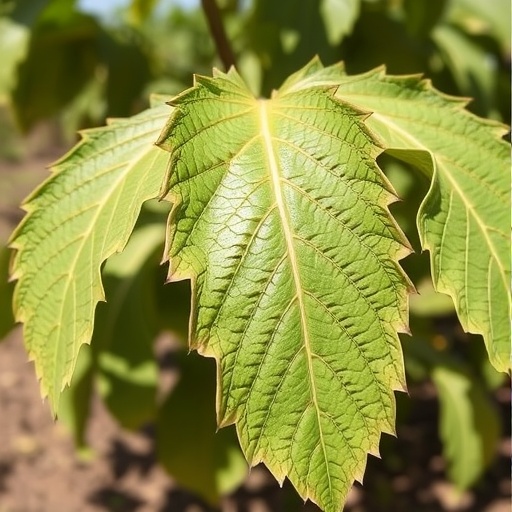In recent years, cassava, a staple food crop in many parts of Africa, has been subject to increasing challenges posed by a myriad of diseases. Among these, cassava mosaic disease (CMD) stands out due to its significant impact on agricultural output and food security in regions such as Burkina Faso. The disease, caused by a group of viruses known collectively as cassava mosaic begomoviruses, has escalated in incidence and severity, leading researchers to delve deep into its epidemiology and management strategies.
CMD is characterized by distinctive symptoms such as leaf discoloration, mosaic patterns, stunted growth, and reduced root yield, which ultimately compromise the quality and quantity of cassava production. The impact of this disease is particularly detrimental in Burkina Faso, where cassava is not merely a crop but a food source vital for millions. The country’s heavy reliance on this crop underscores the urgent need to develop effective management solutions to curb the spread of CMD and protect food security.
Recent studies have highlighted the importance of understanding the epidemiological aspects of CMD to devise robust management strategies. Effective management of CMD requires knowledge of its transmission vectors, notably whiteflies, which facilitate the spread of the disease from infected to healthy plants. By focusing on the life cycle of these vectors and their interactions with cassava plants, researchers aim to implement targeted control measures that can minimize the incidence of CMD.
Research conducted in Burkina Faso has revealed that environmental factors, including temperature and rainfall, significantly influence the population dynamics of whiteflies and, consequently, the spread of CMD. Understanding these environmental interactions is crucial for predicting outbreaks and implementing preventative measures. Furthermore, the application of integrated pest management (IPM) strategies, which combines biological, cultural, and chemical control methods, has been emphasized as a viable approach to manage whitefly populations effectively.
Genetic resistance in cassava varieties is another focal point in the fight against CMD. The development and deployment of CMD-resistant cassava varieties can significantly reduce the impact of the disease. Through breeding programs and biotechnological innovations, researchers are working to enhance the genetic resistance of cassava plants to CMD, ensuring a more resilient agricultural system capable of withstanding the challenges posed by pests and diseases.
Education and awareness among farmers play a pivotal role in the management of CMD. By equipping farmers with knowledge about disease symptoms, transmission mechanisms, and management practices, it is possible to empower them to take proactive measures to protect their crops. Community engagement initiatives that focus on sharing information about CMD and best practices for cultivation can enhance the overall resilience of agricultural systems in affected regions.
Furthermore, the role of local extension services cannot be underestimated. These services form the bridge between scientific research and practical agricultural implementation. Providing farmers with timely information regarding disease outbreaks, pest management techniques, and sustainable agricultural practices can lead to significant improvements in crop yields and food security.
International collaboration is also vital in the fight against CMD. By sharing research findings, resources, and best practices, countries affected by this disease can develop a comprehensive approach to managing CMD collectively. Enhanced cooperation can also facilitate access to advanced agricultural technologies and innovations that can bolster the resilience of cassava production systems across borders.
In addition to genetic and cultural management strategies, the use of biotechnology holds promise for the future of cassava cultivation. The application of molecular techniques for early detection of CMD can revolutionize the way farmers and researchers address this threat. If CMD can be identified at its onset, measures can be taken to prevent its spread, thereby safeguarding cassava crops and the livelihood of millions who depend on them.
The socio-economic implications of CMD are profound, particularly in rural communities where cassava cultivation is a primary source of income. The loss of yields due to CMD not only threatens food security but also exacerbates poverty levels among vulnerable populations. Therefore, it is essential that the fight against CMD integrates agricultural practices with socio-economic policies that aim to uplift rural communities through sustainable development.
Finally, ongoing research and surveillance are essential to adapt to evolving strains of CMD and the ever-changing dynamics of its vectors. Continuous monitoring of disease prevalence and the effectiveness of management strategies will allow stakeholders to remain one step ahead of CMD. This proactive approach can mitigate the disease’s impact, ensuring that cassava remains a cornerstone of food security in Burkina Faso, and potentially across other regions facing similar challenges.
As we advance our understanding of cassava mosaic disease and its implications, it is clear that a multifaceted approach is needed to manage this ongoing threat. By combining scientific research, farmer education, genetic advancements, and international collaboration, the agricultural community can craft an effective response that not only addresses CMD but also underscores the resilience and sustainability of agriculture in the face of environmental and biological challenges.
Subject of Research: Cassava Mosaic Disease in Burkina Faso
Article Title: Cassava mosaic disease in Burkina Faso: epidemiological aspects and disease management perspectives.
Article References:
Sawadogo, S., Tiendrébéogo, F., Tibiri, E.B. et al. Cassava mosaic disease in Burkina Faso: epidemiological aspects and disease management perspectives.
Discov Agric 3, 197 (2025). https://doi.org/10.1007/s44279-025-00386-2
Image Credits: AI Generated
DOI: 10.1007/s44279-025-00386-2
Keywords: Cassava mosaic disease, food security, Burkina Faso, epidemiology, pest management, genetic resistance, agricultural sustainability.
Tags: agricultural impact of cassava diseasesBurkina Faso agriculturecassava begomovirusescassava crop quality and yieldcassava mosaic diseasecassava production challengesCMD management strategiesdisease control in staple cropsepidemiology of CMDfood security in Africatransmission vectors of CMDwhiteflies and CMD





